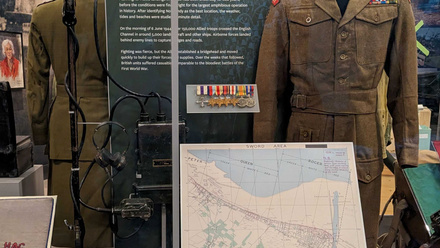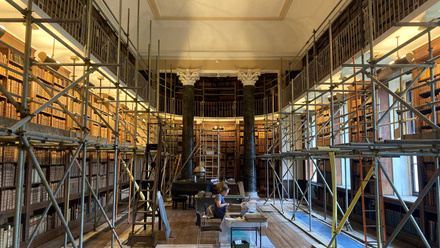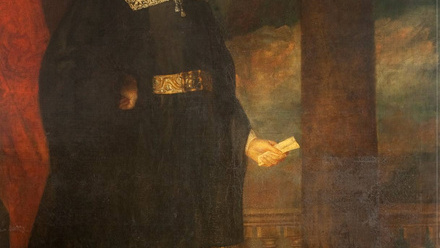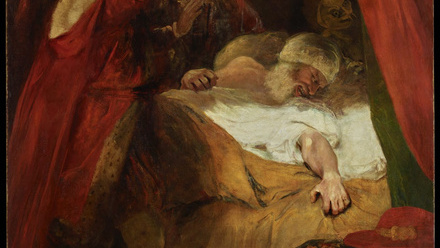Treating The Wall Paintings of St Andrew’s Church, Impington
In the period prior to the Reformation, the walls of the church would have been decorated with figurative wall paintings, including narrative scenes such as the Nativity or a cycle of the Passion, as well as individual saints like St Christopher, who was one of the most popular saints in medieval wall painting, and who is seen here on the north wall.
There would have been an ornately decorated rood screen separating the nave and chancel, and elaborate polychromy on the timber roof and the sculptured niche in the nave, the vestiges of which remain today. The windows would have been decorated with stained glass and the appearance of the church would have been far darker and more ornate than that seen today.
Following the break with Rome and the Civil War, figurative painting of this type was regarded as idolatrous and was largely destroyed or painted over with plain limewash. As a result, in less than a century, the appearance of the church would have changed from the elaborate dark and colourful interior of the medieval Catholic Church to the simpler plain and light building with which we are now familiar.
The paintings at St Andrew’s Church were only rediscovered in 1844, when they were “laid bare” according to an account by F.A. Paley in the Ecclesiologist Guide of the same year. In the early 20th century, Professor E.W. Tristram, an art historian and one of the pioneers of British wall painting conservation, recorded the schemes and dated them stylistically to the early 15th century.
The painting in the nave shows a scene of St Christopher carrying the Christ child across a rippling body of water filled with fantastical water creatures. In the background, a hermit can be seen emerging from a chapel with a lantern in his hand. The scheme is outlined by a beautifully coloured vine scroll, which is reminiscent of medieval illuminated manuscripts.
The painting in the chancel has been visually compromised to a greater extent, due to historic rainwater infiltration from the ceiling above. It portrays a fictive stone niche with carved finials and other elaborate architectural features. The design includes a number of red-winged angels sporting coats of arms, the most visible of which (closest to the window) appears to be the three crowns of the Diocese of Ely.
The 2021 conservation programme was funded by Historic England and the government’s Culture Recovery Fund and was undertaken by Tobit Curteis Associates. Tobit Curteis ACR is an Icon accredited member; he set up the practice in 1992, and he works as a consultant for Historic England, is the Advisor on Wall Paintings for the National Trust and regularly lectures and publishes on environmental and conservation issues.
The treatment made visible many of the very fine details that survive in both paintings, which had become obscured by decades of dirt deposition on the surface and compromised by loss of the paint layer. The treatment began with the stabilisation of the vulnerable areas of the paintings, followed by cleaning. The treatment also addressed reintegration of areas of loss and newly applied fills, reducing the aesthetic disruption and making the paintings more legible.
St Christopher has been painted with considerable skill, as is seen in details such as the fine attenuation of the brushstrokes of his beard and his elaborate clothing of furs and patterned fabrics. Both his and the Christ child’s lips retain vestiges of a bright red pigment, demonstrating the wide range of materials used in the painting.
The conservation cleaning revealed details such as the candle in the lantern, the bell atop the chapel, and the two-tone rippling water at the saint’s feet, containing numerous fantastical water creatures. The painting is bordered with elaborate vine scroll.
All images are © Tobit Curteis Associates 2021.






